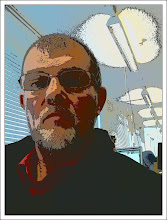
After our walk by the Lagan on New Year's day we stopped in Bob Stewarts for a hot drink and while there came across this page from the News Letter of 1st September 1937. What is interesting about this is the article entitled 'Higher and Higher Speeds' which talks about the invention and advent of television. What it says is as follows:

Television, which is more on the scientific side of transport and communications, is a development of the last 15 years. Its history, however, goes back for more than 50 years. Four nations -- Britain, America, Austria and France -- were in the running; but it was not until the Scottish investigator, John Logie Baird, succeeded in 1924 in transmitting a tiny, pink, flickering image of a Maltese Cross over a distance of a few yards that much real progress was made. Earlier this year the first television transmitting station was opened in London.
According to wikipedia:
The first time images were transmitted electrically were via early mechanical fax machines, including the pantelegraph. The concept of electrically-powered transmission of television images in motion, was first sketched in 1878 as the telephonoscope, shortly after the invention of the telephone. At the time, it was imagined by early science fiction authors, that someday that light could be transmitted over wires, as sounds were.
The idea of using scanning to transmit images was put to actual practical use in 1881 in the pantelegraph, through the use of a pendulum-based scanning mechanism. From this period forward, scanning in one form or another, has been used in nearly every image transmission technology to date, including television. This is the concept of "rasterization", the process of converting a visual image into a stream of electrical pulses.
In 1884 Paul Gottlieb Nipkow, a 20-year old university student in Germany, patented the first electromechanical television system which employed a scanning disk, a spinning disk with a series of holes spiraling toward the center, for rasterization. The holes were spaced at equal angular intervals such that in a single rotation the disk would allow light to pass through each hole and onto a light-sensitive selenium sensor which produced the electrical pulses. As an image was focused on the rotating disk, each hole captured a horizontal "slice" of the whole image, in a scanning fashion.

